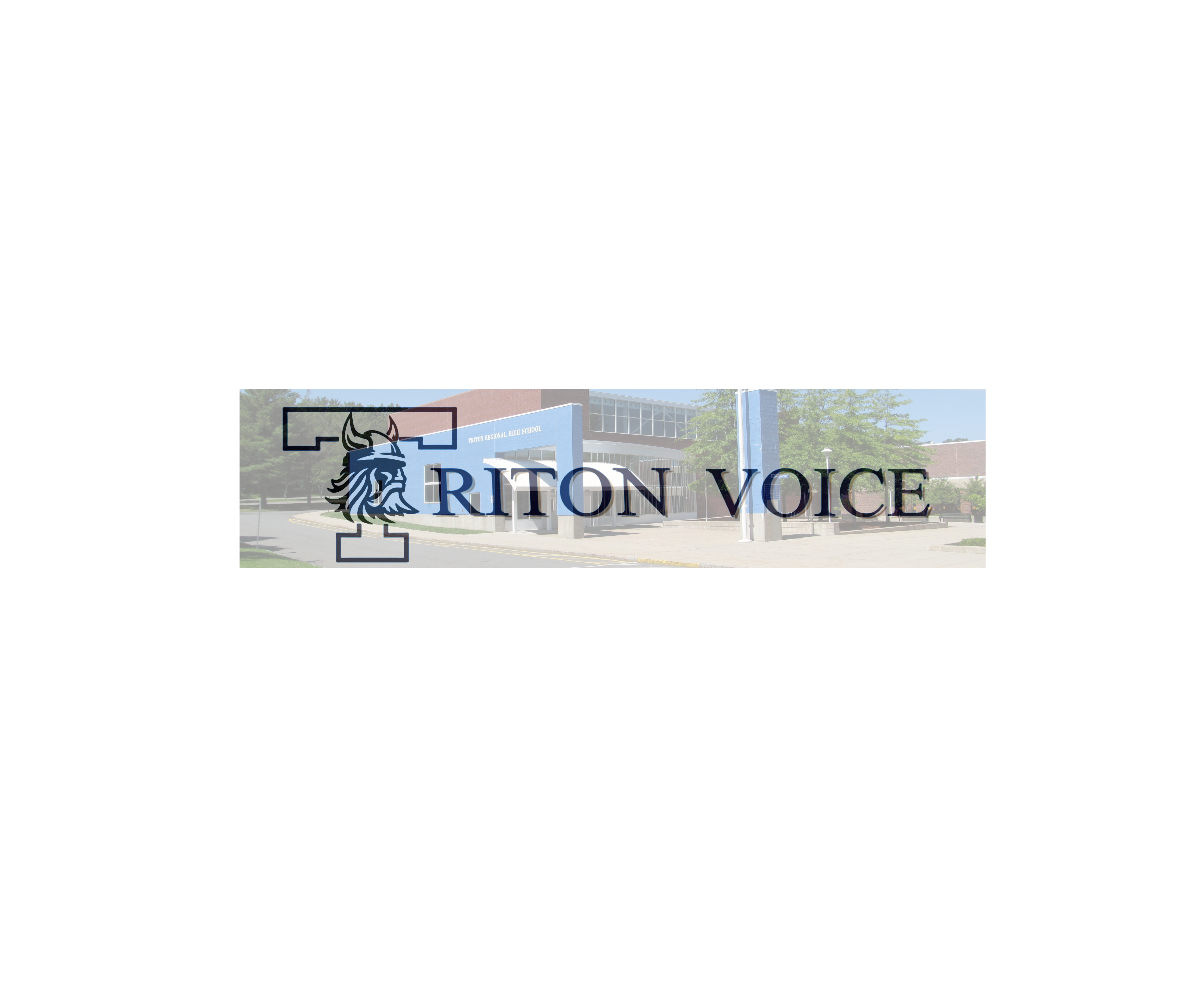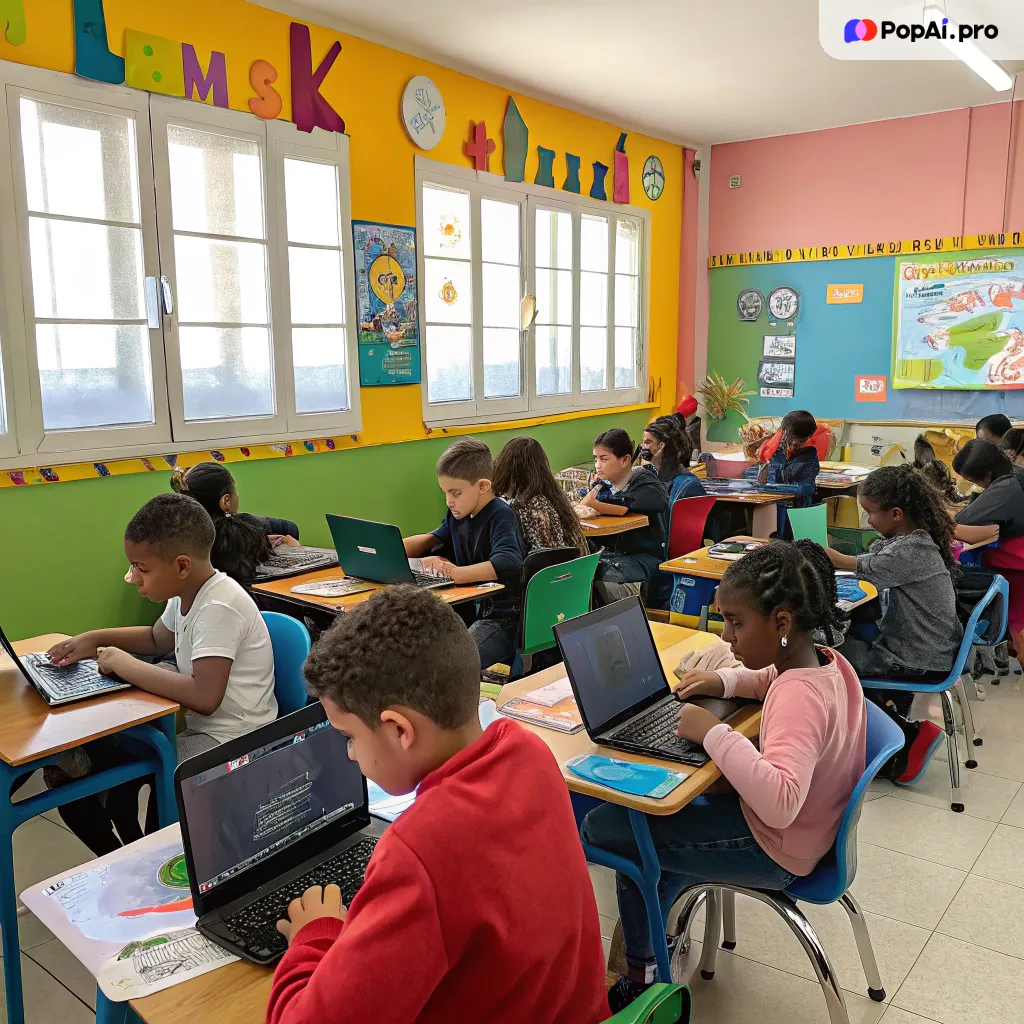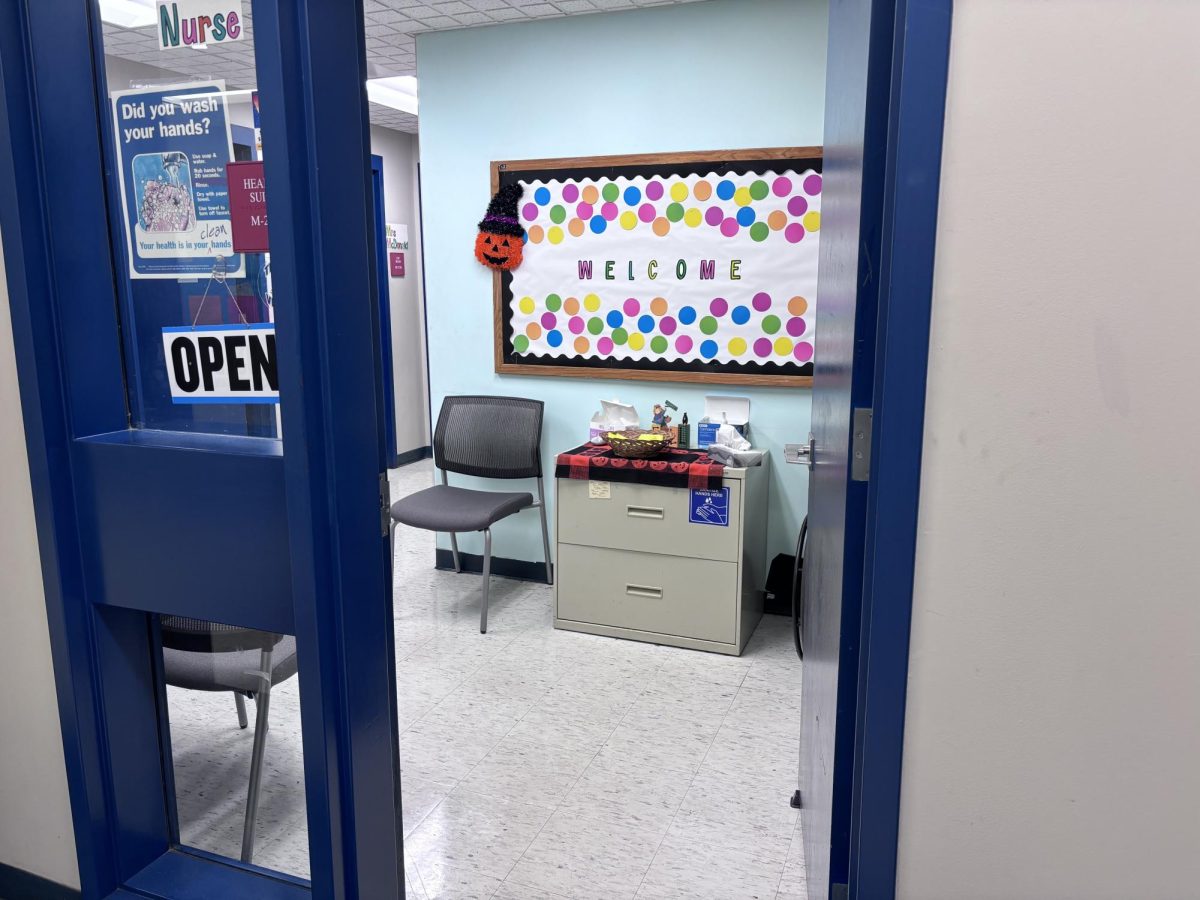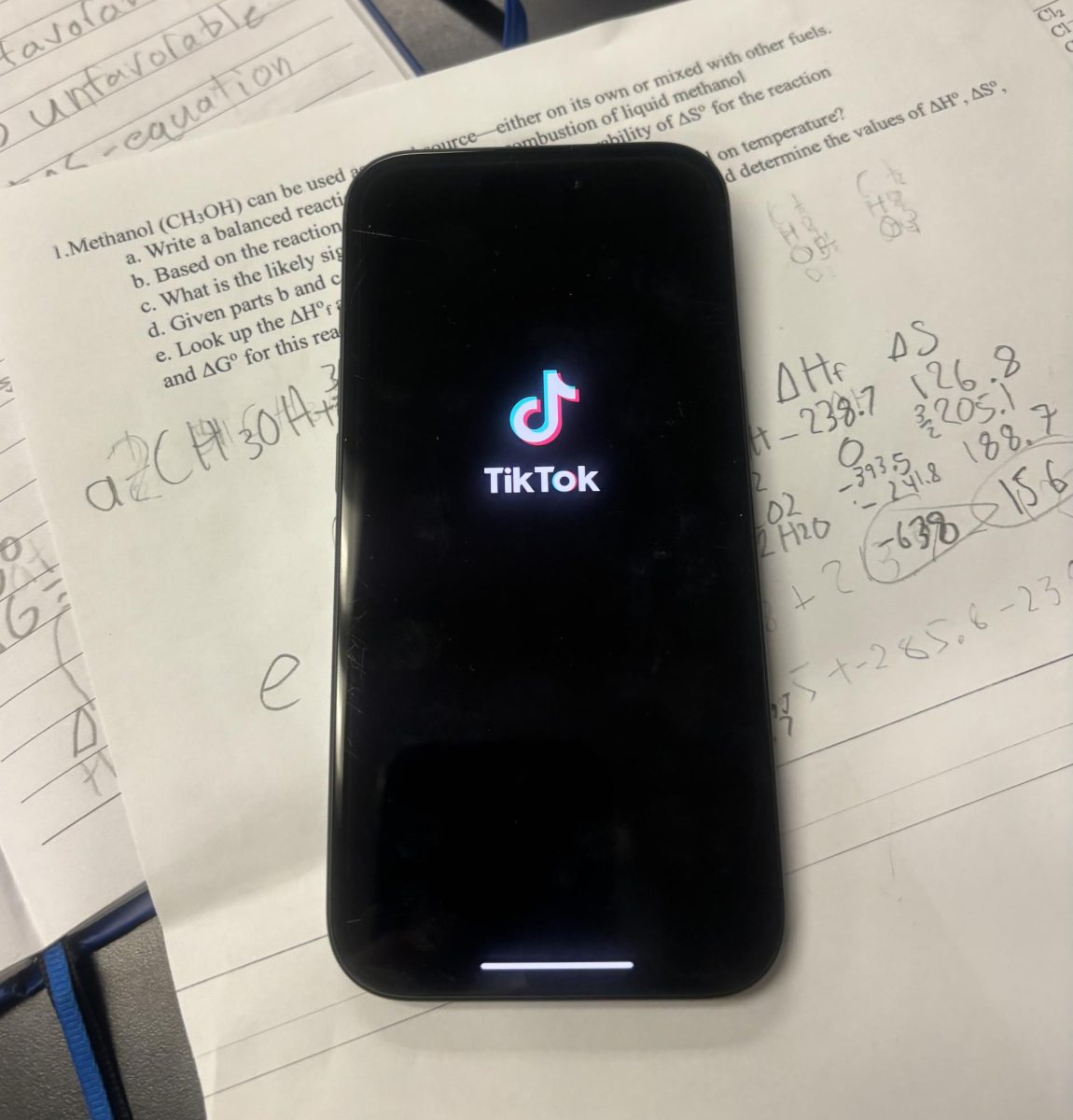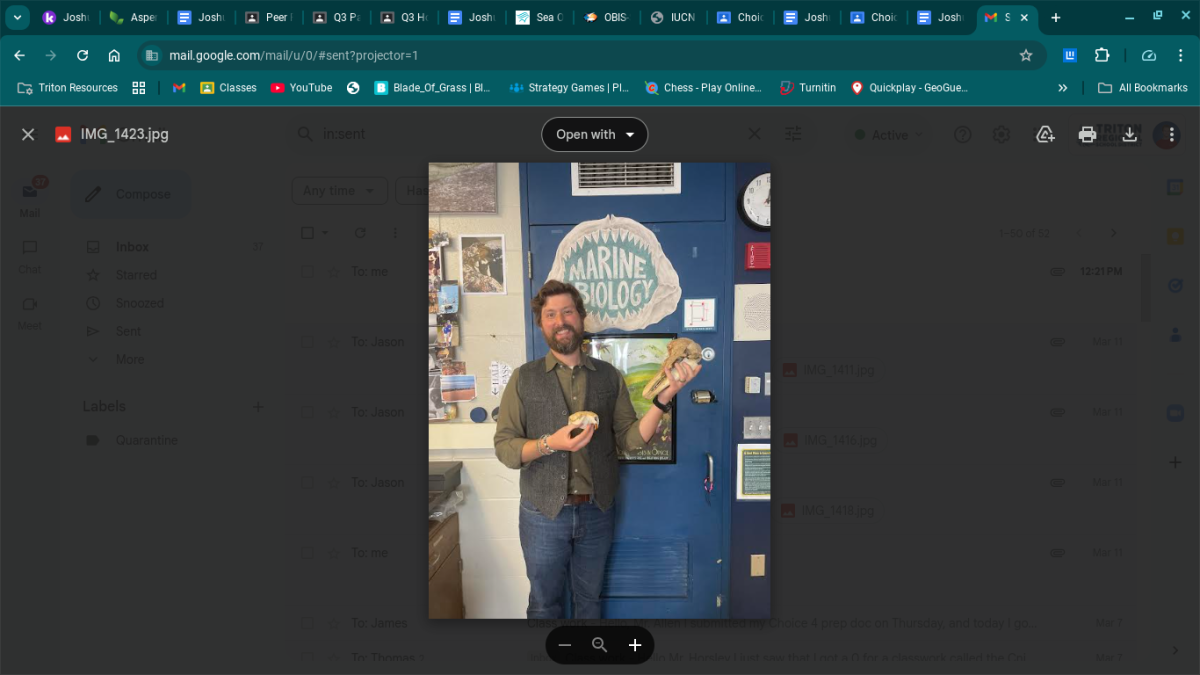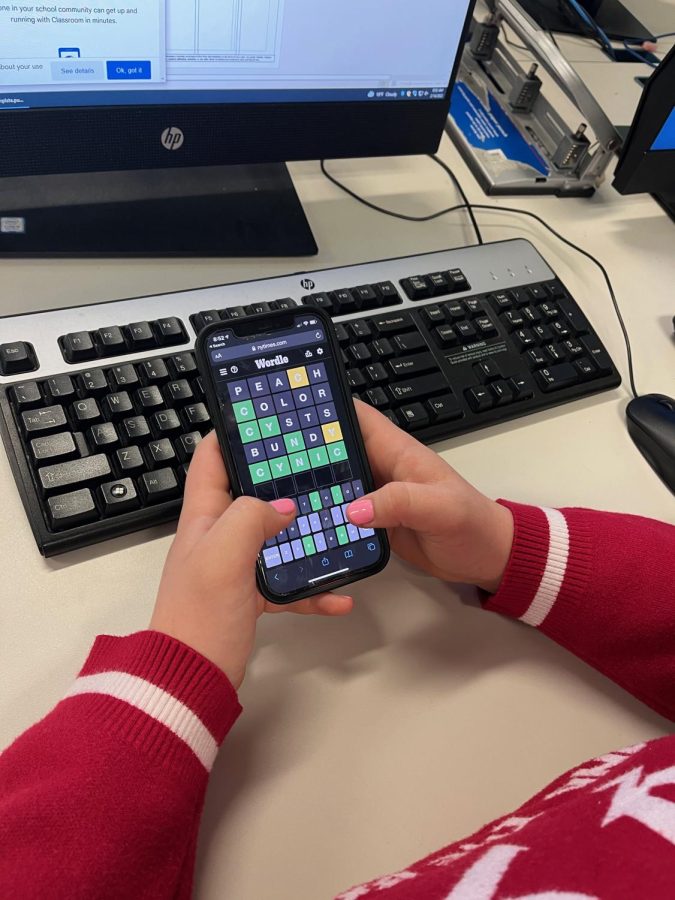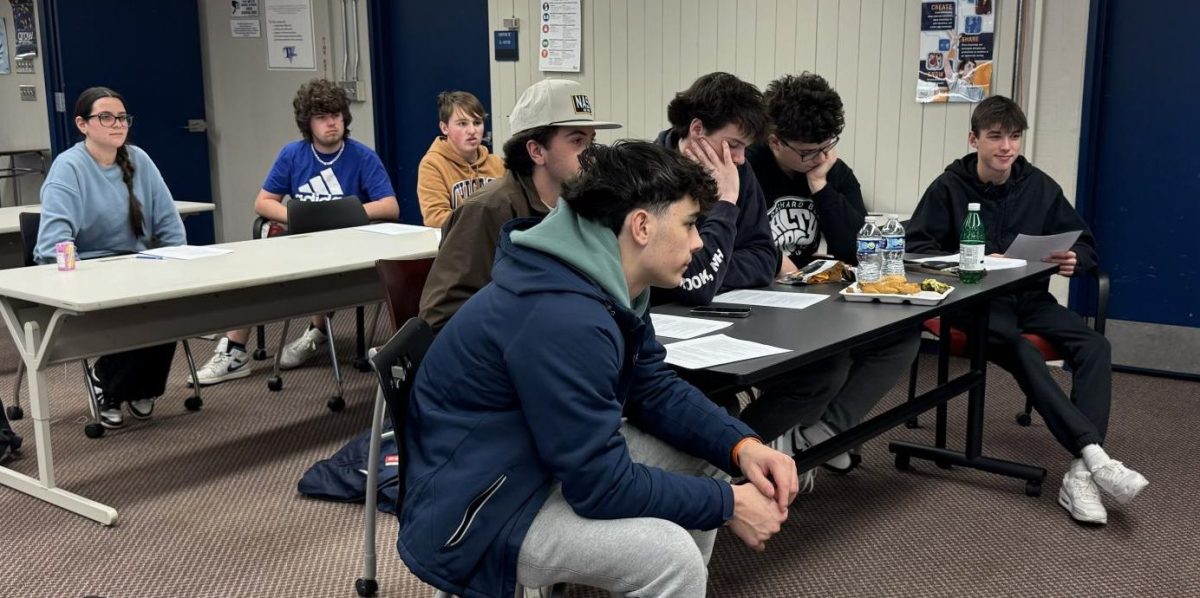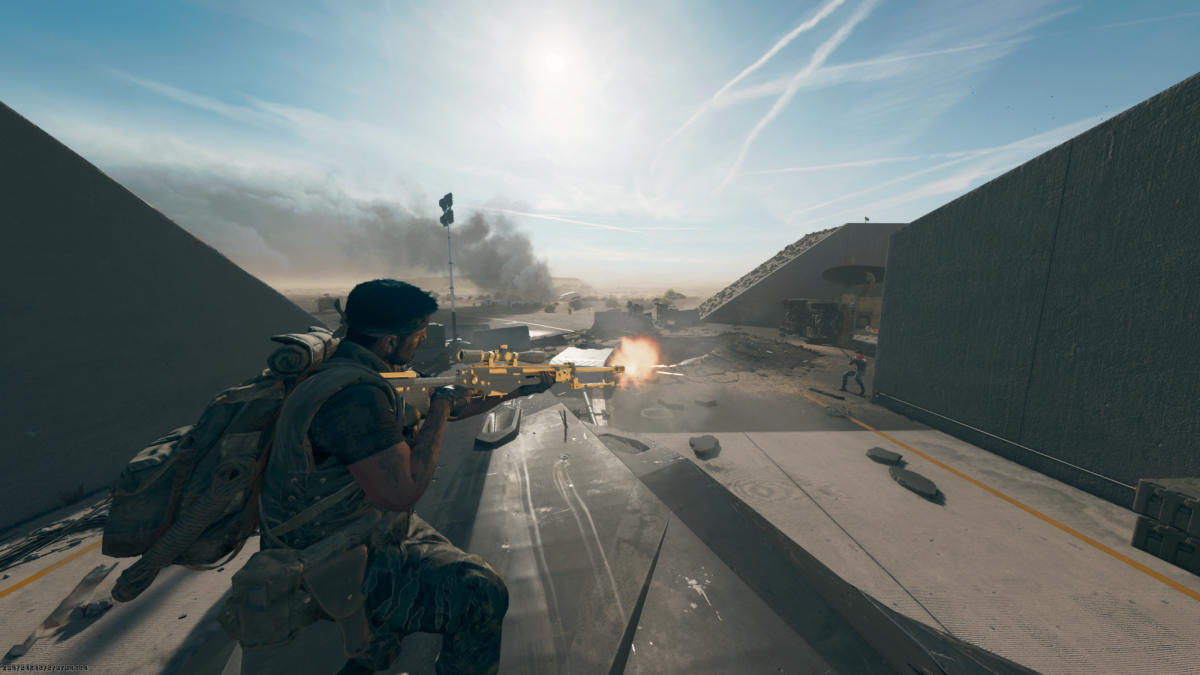The COVID-19 virus and the rise of artificial intelligence (AI) have significantly reshaped education, affecting both how students learn and how teachers approach their work. As classrooms adapt to these changes, a new balance between technology and traditional learning is emerging.
“The focus seems to be more on getting good grades rather than engaging deeply with the material,” says Mrs. Jillian Lewis, a Triton High School social studies teacher. She says that she has noticed a shift in student behavior since the pandemic, attributing this trend to the convenience of tools like search engines and AI.
Math teacher Mr. Matthew Haley shares similar concerns, noting that students often avoid taking risks. Instead students “will simply wait for help or try to use photo math, rather than try to think it through on their own,” he says. This reluctance, he believes, may be a result of habits formed during remote learning when unsupervised access to technology was common.
AI has also influenced how educators approach teaching. While Mrs. Lewis hasn’t made significant changes to her teaching style, she remains cautious about the overuse of AI, noting that curiosity and problem-solving are critical life skills, and using AI more often presents the risk of dampening these sorts of skills.
Mr. Haley has, however, started to change his teaching styles due to AI. “I am finding myself changing my lesson delivery and the types of assignments we work on,” he says. He does this to try and avoid the use of AI on his assignments and try to get the students to learn to do their own work.
He also says that AI can be used as a helpful tool, noting that he uses the AI feature on his Edia assignments to give feedback to his students while they are doing them.
Students are also finding ways to navigate this new educational landscape.
“AI is helpful for understanding and checking my problems, but I try to solve problems on my own first.” Tihan Khan, Triton High School senior, explains. “I use it as a guide, not a crutch.”
This may be the best and most responsible way to use AI. Triton has repeatedly stated that the use of AI to complete assignments is against school policy, and Mrs. Lewis mentions that when students do use AI it is obvious . However, using AI as Khan is something that he thinks is a fair use of the tool and is something he suggests everyone should do.
As education continues to evolve, the challenge lies in integrating technology thoughtfully while preserving creativity, curiosity, and resilience in both teaching and learning.
“Curiosity, problem solving, creativity, etc. are life skills, and the overuse of AI will definitely have an impact on what we are capable of,” Mrs. Lewis stated.
Triton Voice Quarter 2 Article Rubric
| The lead of the story is compelling, drawing the reader into the story and conveying the most significant information. You must NAME your lead type | 10 | 8 |
| Evidence of research (background information and expert studies, websites, or other resources) is included in the story. | 15 | 14 |
| The writer organizes the rest of the story according to the format we went over in class. This should include a nut graph (5 points), quotes (5 points), facts and observations (5 points) that tell a complete story. | 15 | 14 |
| The writer uses at least three sources (5 points each), including at least one in-school interview and one “expert” interview. | 15 | 15 |
| The writer tells the truth (5 points). Spelling, punctuation and grammar are free from errors (5 points). The writer does not make himself or herself part of the story (5 points) | 15 | 14 |
| The story includes a headline that focuses on the most important aspect of the event. | 5 | 5 |
| The writer met the deadline through a written copy or email. | 20 | 15 |
| The article includes an original photo (no Internet images), graph or other piece of art that best captures what the article is about. | 5 | 0 |
